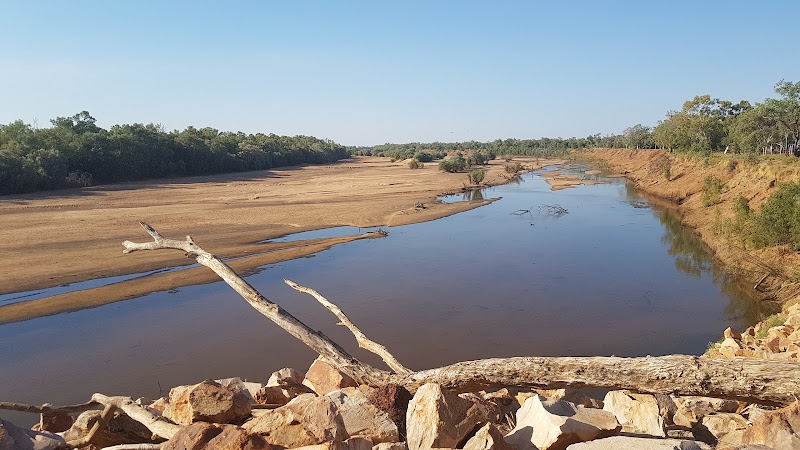
Shinju Matsuri Festival: Broome’s Vibrant Celebration of Culture and Community
Experience the vibrant Shinju Matsuri Festival in Broome, an energetic celebration blending Indigenous heritage with local art and culture. From colorful parades to engaging workshops, this unique festival invites adventurers and culture lovers alike to explore the heart of Western Australia’s pearling town.
Stay Hydrated
July and August are dry but the tropical sun can still be intense—carry at least one liter of water while exploring festival venues.
Wear Sturdy Footwear
Festival sites often have uneven or sandy ground. Closed shoes with good grip will keep you comfortable and safe during long walks.
Book Accommodation Early
Broome fills quickly during Shinju Matsuri. Reserve your stay months in advance to secure a convenient location close to festival events.
Plan for Weather Shifts
Mornings are cool but the midday sun ramps up swiftly. Layered clothing and sun protection will keep you comfortable throughout the day.
Shinju Matsuri Festival: Broome’s Vibrant Celebration of Culture and Community
The Shinju Matsuri Festival in Broome, Western Australia, pulses as a lively heartbeat through this coastal town each August. More than a festival, it’s a dynamic cultural encounter where Indigenous heritage and multicultural influences blend on dusty streets and sandy shores. Expect street parades that greet you with a kaleidoscope of color, performances that demand your attention, and public art installations daring you to witness stories that refuse to be silenced.
Shinju Matsuri means “Festival of the Pearl” — a nod to Broome’s historic pearling industry that still shapes its identity. The town’s warm, tropical breeze carries the scents of sea and spice, while waves at Cable Beach push forward like eager participants in this season of celebration. It’s not just a spectacle but a chance to engage deeply: local workshops invite you to try your hand at traditional crafts, cooking classes offer tastes of rich Kimberley produce, and talks reveal the profound connection this community holds with the land and sea.
Planning your visit is straightforward but requires tact. The festival spans roughly 10 days in late July to early August, drawing crowds eager to experience it firsthand. Accommodation fills quickly, so booking early in Broome’s center or near the beach is advised. Broome’s climate during the festival is dry with mild evenings, perfect for exploring outdoors after the sun dips.
Navigating the festival, prepare for some walking through uneven, sandy terrain and occasional dust stirred by desert winds. Comfortable, sturdy footwear is vital, alongside hydration—Broome’s sun, though tempered by coastal winds, can still claim your energy. Timing is key: morning and late afternoon events maximize your comfort and engagement.
The festival’s events display the community’s forging of identity through performance and visual art. You might catch the captivating barramundi-shaped lantern parade, symbolizing the link between people and water, or witness traditional dances that move with the rhythm of the earth beneath your feet. Every moment here insists that culture is not static but alive, inviting collaboration and respect.
Shinju Matsuri isn’t just an event; it’s an active dialogue between past and present, community and visitor. It challenges you to see Broome fiercely itself—not as a backdrop, but as a participant. Whether you’re drawn by art, history, or the sheer thrill of being present at a living festival, this experience sells one promise: you’ll leave with more than photos—you’ll carry stories.
Practical tip: bring a reusable water bottle, sunscreen suited for tropical latitudes, and be ready to pause in shade spots scattered throughout event venues. This festival moves with the sea breeze, steady yet unpredictable, and rewards those willing to listen closely.
Nearby Trips
All Adventures
Boat Charters
Water Activities
Adventures near Broome, Western Australia
Discover the unique and memorable adventures that make Broome, Western Australia special.
Frequently Asked Questions
What is the main cultural significance of Shinju Matsuri?
Shinju Matsuri celebrates Broome's pearling history and the diverse cultures that have shaped the town, particularly Indigenous communities. It fosters cultural exchange through art, music, and storytelling.
Are festival events family-friendly?
Yes, many events are designed for all ages, including workshops, parade participation, and interactive installations. However, some evening performances may have age restrictions.
How crowded does Broome get during Shinju Matsuri?
Broome experiences a noticeable increase in visitors during the festival. Popular events can draw large crowds, so arriving early and booking accommodations in advance is strongly recommended.
Is parking available near festival venues?
Parking is limited, especially near the beachfront and town center. Public transport and walking are preferred methods to navigate festival locations.
Are there opportunities to learn Indigenous arts during the festival?
Yes, the festival features workshops led by local Indigenous artists offering hands-on experiences with traditional crafts and storytelling.
What should I know about environmental practices at Shinju Matsuri?
The festival promotes sustainability with waste reduction initiatives and encourages visitors to use reusable containers and respect local ecosystems.
Recommended Gear
Comfortable walking shoes
Ensures safety and comfort on sandy or uneven surfaces throughout festival events.
Reusable water bottle
Staying hydrated is critical under the tropical sun and amid outdoor activities.
Sun protection (hat, sunscreen)
Broome’s sun is strong even in mild winter months; sun protection shields skin during daytime events.
Light jacket or layers
Cooler evenings and occasional winds call for added warmth after sunset.
Local Insights
Hidden Gems
- "Gantheaume Point at dawn for early light views and red sandstone cliffs"
- "Broome’s Old Jetty ruins, ideal for quiet reflection away from festival crowds"
Wildlife
- "Watch for ghost crabs scuttling along Cable Beach at sunrise"
- "Migratory birds frequent the Roebuck Bay mudflats nearby during winter"
History
"Broome's pearling industry from the late 19th century onward shaped its multicultural fabric, including influences from Indigenous, Japanese, Malay, and European communities."
